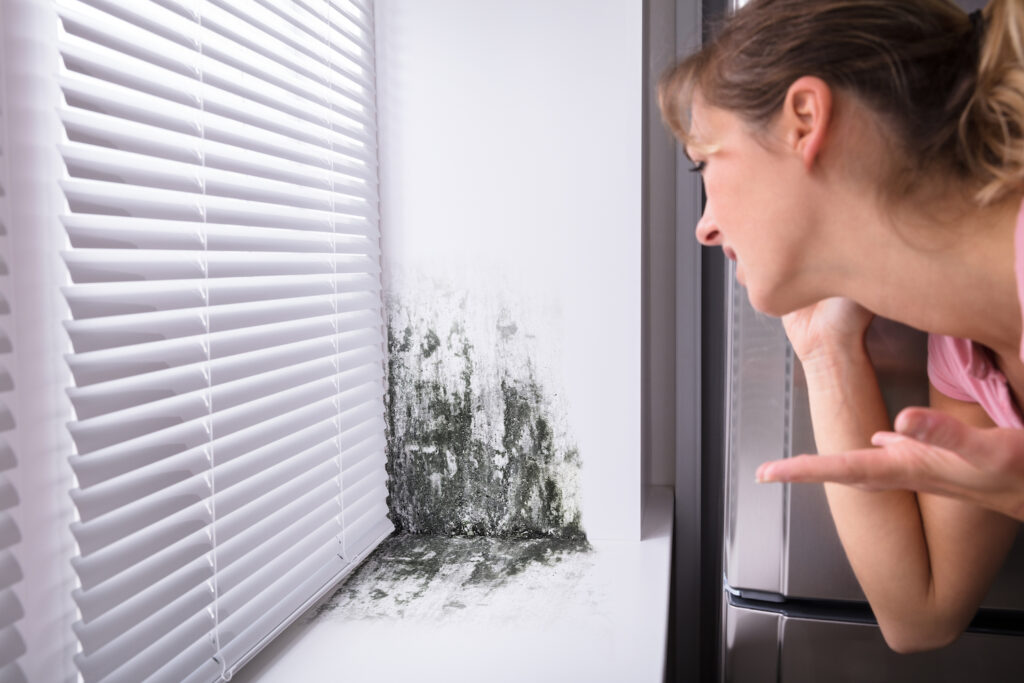We are having a fairly rainy and hot summer so far in the greater Atlanta area. While it can put a damper on your outdoor plans and lead to higher-than-normal air conditioning bills, it is also ripe for mold to grow in your home.
Why Is Mold Bad?
Mold is around us all the time and an important part of the ecosystem outdoors. When mold levels get too high inside, it can cause a number of issues, including allergies and infections. Typical mold exposure symptoms can look similar to allergies and include congestion, eye irritation, sneezing, headache, and skin rash. For most people, mold exposure is not life-threatening for short periods of time. However, for those with asthma, COPD, cystic fibrosis, or similar illnesses, it can lead to dangerous lung or other infections. On top of the health issues it can cause, if left untreated, mold can cause structural damage to your home that can require costly repairs.
How Does Mold Get In?
Mold spores are tiny and can enter our homes or offices through open doors, windows, and vents, but also on our clothing, shoes, or pets. Once inside, if these spores find the right environment, they can grow. Mold thrives in damp areas such as sinks, bathtubs, and showers, but also around leaky pipes and windows, as well as in basements, crawl spaces, and attics.
How Do I Know if I Have a Mold Problem?
Like most issues, you want to find it as early as possible to limit the damage and health issues it can cause. If you notice any of these telltale signs in your home, it is likely time to call us for an inspection.
- Musty or rotten odor: If you notice a musty smell, like rotting vegetables or old books coming from your floors, walls, or anywhere else in your home, it is time to get an inspection.
- White or black spots: Have you seen unexplained spots on your clothing, linens or even walls? It could be early signs of mold growing in your home.
- Warping, cracking, or peeling: Do you see warping in your walls? Is your wallpaper peeling? Signs like these indicate elevated levels of moisture which can promote mold growth.
- “Dirty” grout: Does the grout in your tile floors, showers, or walls looks dirty? Does it come back quickly after cleaning with bleach? If so, it might be mold that is discoloring your grout and bleach can actually make it worse.
What Can I Do to Prevent Mold?
Mold is a living part of the world we live in, and it is impossible to entirely get rid of it. But you can take steps to make your home an inhospitable place for it to reside.
- Fix any water leaks right away. Make sure you clean up any remaining water and dry the area with fans too.
- Don’t leave wet clothes or towels on the floor or in a laundry hamper.
- Repair any windows that sweat or leak.
- Do what you can to keep your home at 50% or lower humidity by using your air conditioner and dehumidifiers. Also make sure to replace filters routinely to avoid mold growth.
- Avoid carpeting the floors in rooms prone to moisture like bathrooms, basements, and laundry rooms.
- Make sure water drains away from your house, and especially not into your crawl space or basement.
- Keep your home well ventilated by using exhaust fans that vent outside when showering or bathing.
If you think you might have mold, or simply want to have your home checked, reach out to schedule an inspection. If we find anything, we can create a plan to remove it and return your home to its original condition.

